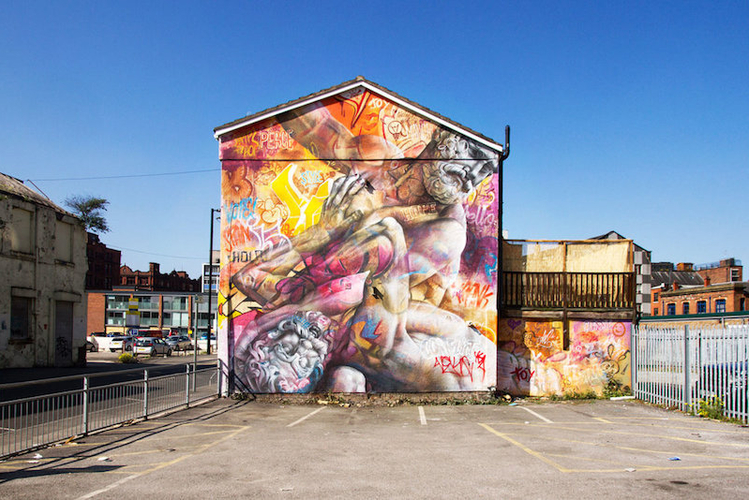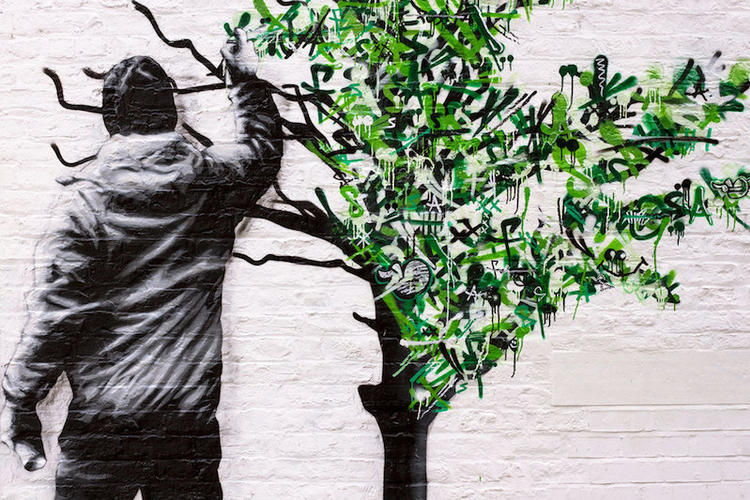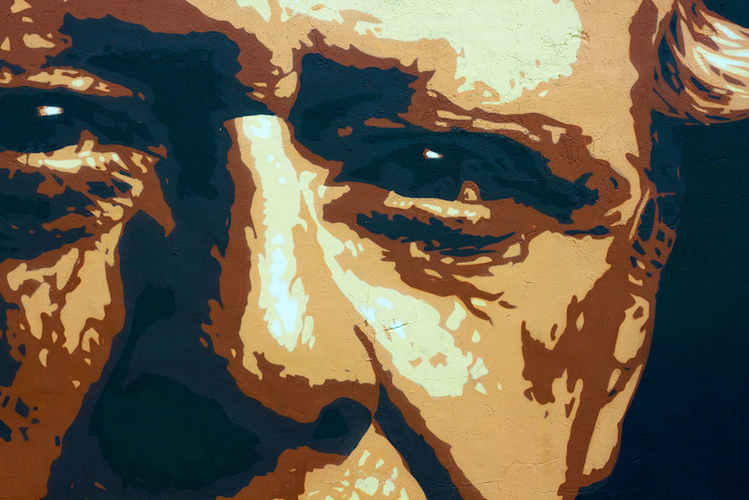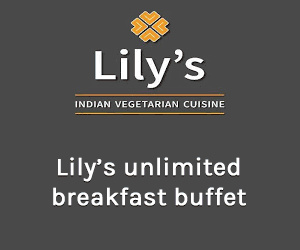No longer confined to the Northern Quarter, the convention will take over Greater Manchester in 2018
When Confidential's Jonathan Schofield recently published a piece on eight striking Manchester artworks (not in a gallery), some readers pointed out that it highlighted the city’s lack of quality public art. Opinion? Yes, but one that Cities of Hope suggests has some basis in truth.
Launched in the Northern Quarter in 2016, the inaugural street art convention was an unprecedented success; reaching millions across the globe via social media, raising £20k for charity and hosting a series of sellout events.
What with the outcry when veteran Northern Quarter installation, the Tib Street Horn, was removed (so much so it is now returning), it seems our appetite for public art isn’t yet sated.
The Cities of Hope premise was simple yet ambitious: secure some unused walls around the Northern Quarter and recruit nine leading street artists to paint on them. While one purpose was undoubtedly decorative, there was a philanthropic side too, with each mural raising awareness for a relevant charity.
Speaking of the project at the time, volunteer Raja Miah said: “We emailed the world’s leading street artists...and every single one replied, because they believe in using art as a social justice tool. A lot of the artists are notoriously private, and were a bit dubious about joining such a public campaign, but they agreed because of the ideology.”
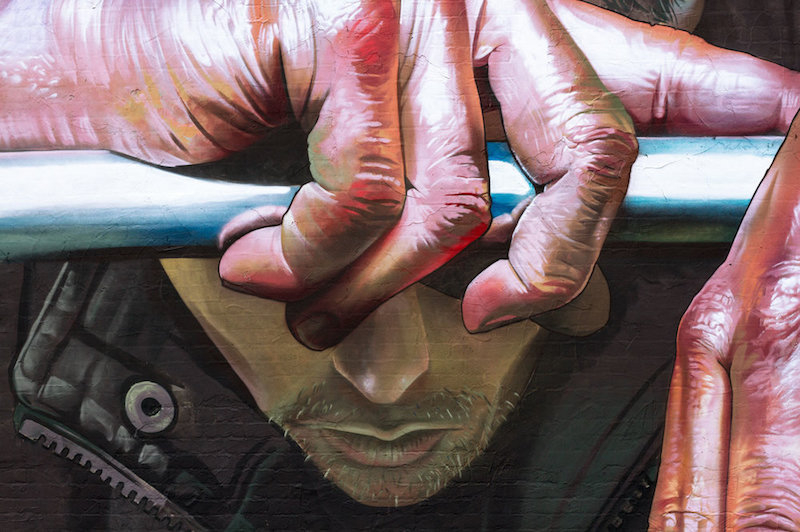
Due to its debut success, it is now hoped the project will be a biannual event: plans for 2018 are already well underway, and they’re more ambitious than 2016, involving three different stages.
“This time round, we have some existing contacts and a lot more experience,” Raja tells me, “whereas last time we were starting from scratch. For 2018, we’ve also managed to secure some funding from the council, who have been really supportive from the beginning. It’s not easy getting prestigious artists to fly over and stay in Manchester without a budget! We’ve also got Axel Void helping us curate artists, and launch the event.”
One of the nine artists who produced a mural in 2016, Void is something of a legend in the street art world (his grandfather even painted for General Franco) and is unsurprisingly in contact with some of the best in the business. So, while the nine 2018 artists will be different to last year’s event, we can no doubt expect the same stunning quality.
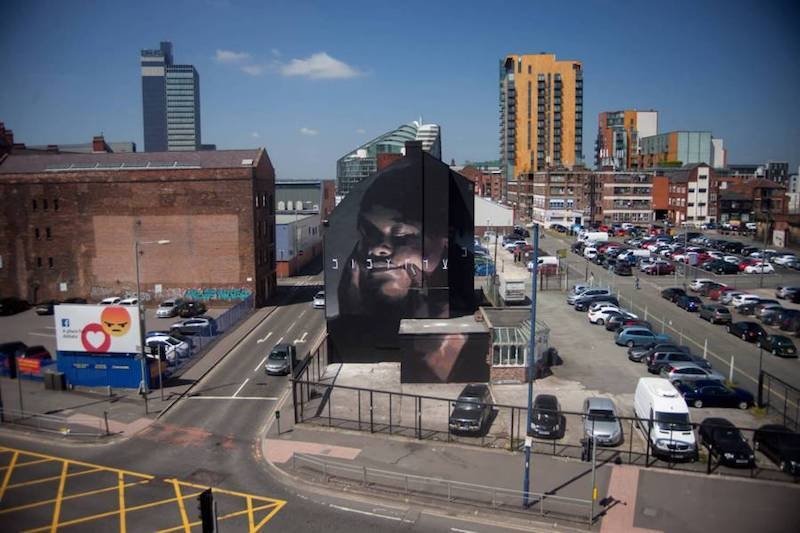
Void, the 'Da Vinci of street art’, will also be launching Cities of Hope 2018 in spring, by painting a tribute to those who have overcome adversity. While the team are still looking for a suitable location, Raja tells me it will be somewhere a lot of people can see it, potentially around the back of Piccadilly near Mayfield. This will be accompanied by a sculpture, celebrating ‘ordinary people.’
“The sculpture will be concrete, the material of the streets. It’s all about celebrating the ordinary people, people we might normally walk past but who are extraordinary in their own right.”
The final stage will see nine local emerging artists, aged 18-25, given the opportunity to work with leading street artists on a Cities of Hope mentorship scheme, culminating in an exhibition at the Whitworth in 2020
Stage two will come around June, and see the nine artists - those Void has helped curate - visit Manchester. Since communities are a key focus for 2018, each will produce two artworks; the first co-created with a local group in a Greater Manchester neighbourhood, such as Moston and Ancoats, inspired by stories of that area.
The second artwork will be in the city centre, and themed around a list of topics: voice, conflict, environment, equality, justice, migration, post truths, poverty and technology.
“We’ve deliberately kept most of the themes quite general, they can be interpreted positively or negatively,” Raja tells me. “And the idea with the two murals is to create a conversation between the centre and the suburbs, which can feel quite separated. Hopefully residents in the outskirts will want to see the city centre works and vice versa.”
We spend our time staring at walls before we use them as canvases. At sunrise and in the still of the night. Our story has many beginnings. #fuzzfowler captures perhaps one of our most important ones. A message to those we love and those who have found love in our work. ‘Hope is not lost, it is never lost.’ #citiesofhope #streetart #streetphotography #streetarteverywhere #socialjustice #hopeendures #love #hope #peace #manchester
A post shared by citiesofhope (@citiesofhope) on
Unlike last year, artworks won’t be twinned with a specific charity (“We found it very uncomfortable having to choose one homeless cause, for example, when there are so many”) but instead will be made available for public use. That way, all can benefit.
The final third stage will see nine local emerging artists, aged 18-25, given the opportunity to work with leading street artists on a Cities of Hope mentorship scheme. Taking place over two years, until the next convention in 2020, this will culminate in an exhibition at the Whitworth.
So, those are the three stages (well we did say it was ambitious). But Raja hasn’t finished yet, telling me the 2018 event will also see a programme of talks and workshops, hosted by people who’ve overcome adversity and gone onto achieve amazing things.
“We have a woman who was sexually abused, then set up a charity which is recognised by the UN as one of the best of its kind. We've a a Pulitzer Prize-winning photographer… they’ll be here for the duration and anyone who might benefit, for instance charities, will be able to access them. Expertise like these are hard to come by.”

Cities of Hope are also planning to work with Manchester International Festival (MIF) on an art commission surrounding our canals, as well as poet Tony Walsh aka Longfella Poet on a piece that incorporates some of his now iconic poetry.
It’s all exciting stuff and, Raja says, necessary if we want to be taken seriously as an international city. Not only is Cities of Hope a truly global project, involving artists from across the world, it’s also very democratic. While some people may not normally visit a museum or gallery, street art transcends borders: it can be accessed by everyone.
Perhaps because of this, it’s becoming increasingly used by communities to carry a message; the Matthew Ludlam Foundation’s Chasing Dreams Not Dragons and Russ Meehan’s bees - commemorating those killed in the arena attack - to name but two examples.
Generally, the response is phenomenal, illustrating the power of art to strengthen communities and inspire positive change: qualities that Cities of Hope so inspires.
Cities of Hope 2018 neighbourhoods will be revealed before Christmas and the artists around February next year. The website is soon to go live - in the meantime, keep up to date with the project on Twitter and Instagram. We’re expecting great things…
Main images: Henrik Haven



